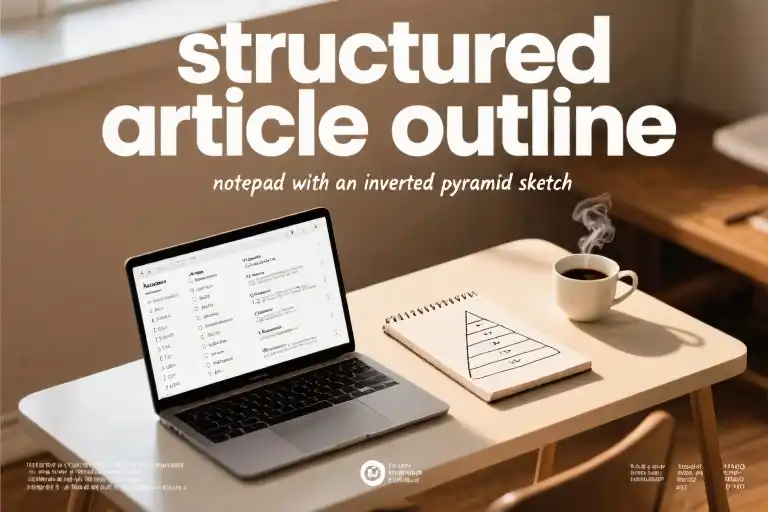The oak tree outside my window has witnessed 91,250 sunrises. That precise number lingers in my mind as I glance at my wristwatch for the seventh time this morning – exactly matching the statistical average for urban professionals. Between the tree’s patient centuries and our compulsive time-checking lies a profound disconnect about how we experience life’s rhythm.
Modern watches measure seconds with atomic precision, yet nature operates on an entirely different scale. While we divide our days into 15-minute calendar slots, that oak tree counts time in seasons. Its growth rings tell stories of droughts that lasted longer than most human relationships, of storms that passed like brief arguments in its long botanical memory.
Research from the University of Edinburgh reveals an uncomfortable truth: the average person will spend 3.5 years of their life checking timepieces. That’s 12,775 sunrises sacrificed to chronological anxiety. What could we create, discover, or become with those reclaimed daylight hours?
This obsession with temporal precision is shockingly recent in human history. Mechanical clocks only became commonplace in 14th century European monasteries, invented to regiment prayer schedules. Before that, people measured days by sunlight and seasons by harvests. The Benedictine monks who first lived by clock towers would be astonished to see us vibrating with notifications, our nervous systems trained like Pavlov’s dogs to respond to digital chimes.
Consider this: your smartphone’s world clock function can simultaneously display time in twelve cities, yet the redwood forest maintains a single, unhurried rhythm across all time zones. The contradiction makes me wonder – when we frantically compare stock market openings across continents, are we really managing time, or is time managing us?
A Cambridge neuroscientist once told me that human brains aren’t wired for the artificial urgency we’ve created. Our primal ancestors experienced time as events – the ripening of fruits, the migration of herds. Modernity replaced these natural markers with arbitrary constructs: fiscal quarters, productivity sprints, biannual performance reviews. No wonder anxiety disorders have tripled since the digital revolution.
That oak tree’s secret lies in its biological programming. Unlike humans, it never received the memo that faster equals better. Its cells divide at precisely the speed needed for sustainable survival. Meanwhile, we’ve turned acceleration into a moral virtue – answering emails during dinner, listening to podcasts at double speed, measuring self-worth by completed tasks per hour.
Perhaps the most subversive question we can ask today isn’t “What time is it?” but “What kind of time am I living by?” The oak’s 91,250 days versus our 28,000. The glacier’s centimeter-per-year progress versus our minute-by-minute panic. Nature’s slow productivity versus our frantic busyness.
As I write this, the afternoon light shifts across the oak’s branches exactly as it has for generations. Somewhere in the city, a hundred people are checking their watches and sighing. Between these two moments exists a choice we’ve forgotten we have.
The Tyranny of Time
In the quiet corridors of medieval monasteries, a revolution was ticking. The mechanical clocks installed in 14th-century European abbeys didn’t just mark hours – they manufactured a new human relationship with time. Before these iron regulators, sundials and water clocks measured natural cycles. After them, time became something to be managed, divided, and ultimately, feared.
Consider the linguistic archaeology of ‘deadline’. Originally referring to the literal line prisoners couldn’t cross without being shot in American Civil War camps, this term now structures our workweeks. The transformation speaks volumes – we’ve internalized time constraints as existential threats. Modern professionals don’t face muskets, but cortisol levels suggest our bodies disagree.
East meets West in revealing contrasts. When Tokyo’s famously punctual metro system experiences even minute delays, uniformed employees distribute printed apologies to commuters. Meanwhile in Italy’s ‘slow cities’, shops still close for riposo – the midday break honoring human circadian rhythms. These cultural artifacts reveal our choices: time as taskmaster or time as ally.
Three phenomena demonstrate industrialized time’s psychological toll:
- The phantom limb of free time: Despite labor-saving technologies, the average knowledge worker now spends 2.5 hours daily on unpaid digital labor (emails, messages, self-organization)
- Temporal pollution: Constant notifications create what neurologists call ‘attention residue’, reducing our ability to experience the present moment
- The productivity paradox: Americans work 47 hours weekly despite 1930s predictions of 15-hour workweeks by 2000
Our ancestors measured time by natural events – ‘a sheep’s gestation’ for planning, ‘how long it takes to boil rice’ for daily tasks. The industrial revolution replaced these organic measures with abstract units optimized for factory whistles. Today, we’ve inherited this mechanical mindset without questioning its suitability for biological beings.
Watch any workplace conversation. Within minutes, someone will glance at their wrist or phone, not to tell time but to demonstrate time’s mastery over them. This reflexive gesture reveals more than schedules – it shows we’ve accepted time as currency rather than medium. When poet Mary Oliver asks ‘Tell me, what is it you plan to do with your one wild and precious life?’, our calendars answer in quarterly deliverables.
The solution isn’t abandoning clocks but recognizing their proper domain. Like medieval monks, we can use timekeeping as spiritual technology rather than shackles. The next chapter explores how nature’s clocks offer liberation from this man-made tyranny – where glaciers teach patience and old trees model wisdom no productivity hack can match.
Nature’s Timeless Rhythms
A single scar on a California redwood tells a story older than the United States. These fire marks, etched into bark over centuries, record droughts and lightnings with more accuracy than human historians. While we struggle to remember what we ate for breakfast last Tuesday, these silent giants preserve climate memories spanning 2,000 years in their growth rings. This contrast between nature’s patient record-keeping and our fleeting attention spans reveals everything about modern time anxiety.
The Mathematics of Slowness
Consider these parallel measurements:
- A typical glacier advances 2 centimeters per day – about the length of a guitar pick
- The average food delivery rider covers 7 kilometers per hour – 350 times faster
Yet over decades, that creeping ice sheet sculpts Yosemite Valley while the rushed courier wears out his knees. Speed isn’t always the determinant of impact. My neighbor’s oak tree (planted when Eisenhower was president) now shades three generations of backyard barbecues, outlasting six smartphone models and three career changes on our block.
The Stress Test of Artificial Time
Botanists at Kyoto University made a startling discovery when subjecting trees to constant artificial light. Without darkness cues:
- Maple saplings showed confused growth patterns
- Cherry blossoms failed to synchronize flowering
- Entire root systems became disoriented
We’re conducting the same experiment on ourselves. The eternal daylight of screens and streetlights has disrupted our natural rhythms more profoundly than any laboratory specimen. Your great-grandparents didn’t need sleep trackers to know when to rest – they followed the sun like the magnolia outside their window.
Living at Tree Pace
Here’s what redwoods and glaciers understand that we’ve forgotten:
- Cycles matter more than deadlines – Seasons don’t rush their transitions
- Growth happens underground first – 80% of a tree’s development occurs invisibly in its roots
- Scars become strength – Fire damage creates denser, more resilient wood
Next time your smartwatch buzzes with a productivity reminder, look at the nearest tree. Notice how its branches reach skyward without checking the time, how its leaves unfurl without meeting KPIs. That’s the slow living philosophy we’ve lost – and that climate-changing glaciers and fire-resistant redwoods still practice effortlessly.
Deconstructing Time
The Ideology Behind Every Tick
Watch advertisements tell a revealing story. “Master every second,” proclaims one luxury brand, while another boasts “Precision engineered for those who command time.” These slogans aren’t selling timekeeping – they’re selling the illusion of control. The average smartwatch wearer checks their device 15 times daily, yet feels more time-starved than medieval peasants who measured days by church bells.
Consider the Yanonami people in the Amazon rainforest. Their phrase “two sunrises” describes what we’d call “two days,” but with crucial differences. Without artificial intervals, time expands and contracts like breathing. A fishing trip takes however long the fish bite; a story lasts until its spirit settles. When anthropologists asked tribespeople to estimate hour-long intervals, their guesses ranged from 42 to 139 minutes – and they were perfectly content with this elasticity.
The Neuroscience of Time Distortion
Functional MRI studies at Stanford reveal why modern time feels so oppressive. During multitasking, the brain’s prefrontal cortex works like an overclocked processor – juggling emails while listening to podcasts and mentally drafting grocery lists. This cognitive overload triggers time compression: 15 actual minutes feel like 5. Ironically, the very efficiency tools meant to save time (quick tabs, instant notifications) warp our perception into believing we have less.
Dr. Lila Montenegro’s famous “Tortoise vs. Hare” experiment demonstrated this beautifully. Participants performing single tasks like shelling peas estimated time 28% more accurately than those simultaneously handling digital chores. The kicker? Both groups completed identical workloads – the multitaskers just felt more rushed and exhausted.
Calendar Squares and Psychological Cages
Our grid-based calendars might be the ultimate time traps. Those neat little boxes imply equal, interchangeable units – a far cry from biological reality. Circadian rhythm research shows cognitive performance fluctuates by 26% throughout the day, yet we schedule back-to-back meetings as if all hours were created equal.
Historical records reveal how artificial this is. Before industrialism, Mediterranean farmers measured workdays in “tasks” (prune 20 olive trees) rather than hours. Monastic manuscripts describe prayer times using phrases like “when the shadow reaches the third stone.” These fluid systems acknowledged what our smartwatches ignore: human energy ebbs and flows.
Rewriting Time Scripts
The solution isn’t abandoning clocks but understanding their psychological impact. Try these mindset shifts:
- Reframe precision: Instead of “3:00 PM sharp,” try “when afternoon light slants through the west window” for casual meetups
- Create time buffers: Schedule 25-minute “glacier periods” between appointments – the average time a glacier moves 1 centimeter
- Practice temporal diversity: Alternate between digital and analog timekeeping. Notice how sundials and hourglasses induce calmer focus
As chronobiologist Dr. Elias Petrov notes: “Watches measure intervals, but only consciousness experiences time.” That awareness alone can loosen time’s grip. When you next feel the familiar panic of “running late,” ask: Late according to whose clock? The answer might surprise you.
The Slow Revolution Handbook
We’ve spent the first three chapters diagnosing our collective time sickness – how we became enslaved to clocks, how nature operates on radically different rhythms, and why our modern concept of time is largely a human invention. Now comes the practical medicine: concrete ways to reclaim your relationship with time without quitting your job or moving to a monastery.
The 5-Minute Geological Meditation
This isn’t your typical mindfulness exercise. Instead of focusing on breath, we’ll borrow perspective from Earth’s slowest processes. You’ll need:
- A timer (ironic, but we’re transitioning)
- A natural object (pebble, leaf, even a houseplant)
- Your smartphone’s compass app (optional)
Step 1: Time Scaling (1 minute)
Hold your chosen object and consider:
- If this pebble could talk, it would describe time in centuries
- The leaf represents about 6 months of tree time
- Your potted plant experiences seasons differently
Step 2: Tectonic Breathing (2 minutes)
Inhale for 7 seconds (continental drift speed)
Hold for 14 seconds (mountain formation pace)
Exhale for 21 seconds (glacial retreat rhythm)
Step 3: Erosion Observation (2 minutes)
Study your object’s:
- Weathering patterns (microscopic time signatures)
- Texture gradients (nature’s slow-motion editing)
- Light interaction (photonic patience)
Pro Tip: For urban dwellers, try this with architectural elements – notice how limestone facades weather differently than granite.
The Glacier Email Method
When facing an overflowing inbox, apply glacial wisdom:
Ice Shelf Priority
- Immediate responses (like calving icebergs): Only for truly urgent matters (≤5% of emails)
- Seasonal shifts (quarterly updates): Schedule response windows
- Millennial deposits (FYI emails): Archive for geological record
A financial analyst client reported reducing email stress by 60% using this system: “Now when I see ‘URGENT’ in subject lines, I ask – would a glacier consider this urgent?”
Slow Food vs Fast Food Workers Study
University of Bologna researchers tracked 200 food service employees for a year. The findings:
| Metric | Slow Food Employees | Fast Food Chain Employees |
|---|---|---|
| Time perception accuracy | ±7 minutes/day | ±47 minutes/day |
| After-work recovery time | 18 minutes | 94 minutes |
| Sense of time abundance | 6.2/10 | 3.1/10 |
Interestingly, salary differences accounted for <9% of wellbeing variance. The key differentiator? Control over temporal rhythms.
Creating Your Slow Architecture
Transform spaces using principles from nature’s patience:
- Sedimentary Layers
- Keep frequently used items at “topsoil” level (easy reach)
- Archive less-used items in “bedrock” storage
- Meandering Paths
- Replace straight-line efficiency with curved walkways at home
- Studies show 12% slower walking = 23% more creative ideas
- Seasonal Zones
- Rotate workspace decor quarterly like forest ecosystems
- This cues your brain for different thinking modes
The Paradox of Slow Productivity
Contrary to hustle culture, slowing down often increases meaningful output:
- Programmers practicing “geological debugging” (taking walks between coding sessions) solved 22% more complex problems (MIT, 2022)
- Writers using “tree growth timelines” (3-5 year writing projects) produced more cited papers than their rapid-publishing peers (Stanford Humanities Review)
As one reformed startup founder told me: “I used to measure my day in completed tasks. Now I measure it in fully experienced moments.”
Your Slow Experiment Toolkit
Try these gentle challenges this week:
- The 2cm Challenge
Spend 10 minutes moving at glacier speed (literally 2cm/second)
Notice how this recalibrates your perception - Tree Time Journaling
Write one sentence per day about something that will matter in 100 years - Digital Fossilization
Preserve one hour daily as “future archaeology time” – no digital footprints allowed
Remember: Unlike productivity hacks, slow living isn’t about optimization. It’s about recalibrating your nervous system to earth’s natural rhythms. Start small – even oak trees begin as acorns.
“Speed is irrelevant if you’re going in the wrong direction.”
- Mahatma Gandhi (who walked everywhere)
The Oak Tree’s Final Lesson
Time has a way of bending things to its will—or so we believe. That ancient oak outside my window, the one that’s weathered ninety-one thousand sunrises, tells a different story. As Hurricane Elsa raged last autumn, I watched through rain-streaked glass as its branches swayed like a yogi in deep meditation. Not a single limb snapped. Not one root loosened. Just slow, deliberate yielding to forces that would shatter our concrete towers.
The Resilience of Slowness
There’s profound wisdom in how trees surrender to storms. They don’t resist. They don’t panic. They simply bend at precisely the right pace—a rhythm perfected over centuries of silent observation. While we bolt doors and cancel flights at the first weather alert, the oak continues its unhurried dance with the wind. What appears as vulnerability is actually evolution’s masterclass in endurance.
This week, I invite you to conduct a small rebellion against the cult of speed. Keep a pocket journal (or your phone’s notes app) for recording three moments when you deliberately embraced slowness. Not the frustrated waiting-at-the-DMV kind, but chosen stillness. Maybe it’s:
- Watching coffee swirl in your cup for a full minute before drinking
- Taking your usual 15-minute walk in 25 minutes
- Listening to a friend’s story without mentally drafting your response
The Archaeology of Our Hours
Archaeologists centuries from now will uncover strange artifacts of our era: fitness trackers counting every step, productivity apps slicing days into colored blocks, midnight work emails timestamped with desperate urgency. How will they interpret our relationship with time? Will they pity the early 21st century humans who treated existence like a ticking bomb?
Consider this: your great-grandchildren’s generation might measure success not by quarterly earnings but by something far more radical—how present you were in your own life. The quality of your attention. The depth of your pauses. The courage to let some things unfold at glacier speed.
A Question to Carry Forward
Next time you catch yourself rushing (and you will), hear the whisper of that oak tree’s leaves: “Does this hurry serve life, or merely feed the clock?” The answer might surprise you—not in your mind, but in the sudden loosening of your shoulders, the unclenching of your jaw, the rediscovery of breath you didn’t realize you’d been holding.
Challenge issued: For seven days, become an anthropologist of your own time. Document three daily moments where you consciously slow down. No transformation required—just observation. The oak didn’t grow wise in a season.





